Many people are not interested in the meaning of moles on the body, and in vain, because these formations on the skin can be very dangerous for the body. There are many types of such formations, they differ in shape, size, color. Some people have a huge number of them, others only a few, but everyone has at least one. Read why these formations appear on the skin, how to understand which of them are dangerous, and learn about effective removal methods.
What are moles
Every person should know the nature of formations, which in scientific language are usually called nevi. Moles are a concentration of melanocyte cells. Melanin, the pigment that determines color, is concentrated in them. They come in different shades of brown, black, red, yellow and even purple. According to their shape, they are classified as flat, convex, hanging, lumpy, or with a stem.
Moles are of a similar nature to birthmarks. The difference is that the former can appear, change and even disappear throughout life (the most active period is from six months to 25 years), while the latter are given to a person from birth. They can be located on any part of the skin: both the face and the body. There are cases of their occurrence on mucous membranes.
Why moles appear
You have already read that pigmented formations can appear and disappear at any age, but what does this depend on? Factors that provoke the appearance of moles on the body:
- Heredity. Often in children, nevi appear in the same areas as in their parents, and sometimes in even greater numbers.
- Sun rays. Melanin under their influence is produced several times more intensely. Staying in the sun for a long time is dangerous not only because new ones can form, but also because old ones can transform into a tumor, even malignant.
- Viruses, injuries, radiation, x-ray exposure. Under the influence of each of these factors, melanocytes can group and come to the surface of the skin.
- Hormonal changes. Any surge in hormones (especially in women) can trigger the appearance or disappearance.
- Cluster of blood vessels. Nevi occur due to the accumulation of small processes of blood vessels.
- Dysfunctions of internal organs and systems. More often they lead to the appearance of vascular nevi. They can develop due to dermatological diseases, dysfunction of the large intestine, pancreatic dysfunction, and imbalance of lipid metabolism.
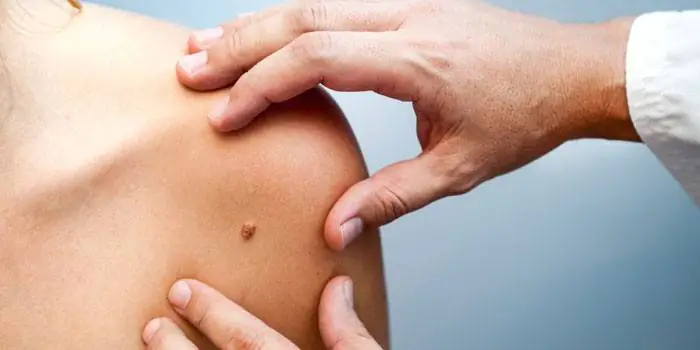
Reasons for the appearance of moles on the body in women
The occurrence of nevi is directly related to hormonal surges, of which there are plenty in the female body. The reasons for the appearance of moles on the body in women can be changes in the body associated with pregnancy (nevi often form on the skin of the abdomen, legs), menopause, and puberty. Sometimes, although rarely, they occur before or during menstruation.
How moles appear
Skin cells become more and more melanin pigment and transform into melanocytes. This occurs under the influence of one of the causes of nevi listed above (sun exposure, hormones, etc.). The accumulation of melanocytes is the reason why moles appear on the body. Whatever the nature of the nevus, the mechanism of its development always looks like this.
Types of moles
Formations can look very different, but according to a number of characteristics they are usually combined into several groups. The following types of moles are distinguished according to the nature of their occurrence:
- Angiomas. Formed due to pathological transformation of blood vessels. They can be flat or convex, pink, red, purple. They will never become malignant.
- Hemangiomas. A type of angioma. They appear shortly after birth in a child, gradually turn red and slightly swell, and have clear boundaries. Most often localized on the neck and face.
- Vascular malformation. There are two types of defect. The first is called port-wine stains and affects the torso, face, and arms. At first they are pale pink, but then they become scarlet or crimson, and with any dilation of the blood vessels they acquire brightness. The second type of malformation is a stork bite. Deformation of blood vessels in a child due to excessive pressure from the mother’s pelvic bones. These are asymmetrical reddish spots that last up to a year.
- Lentigo. Flat, different shades of brown. Small, reminiscent of freckles, but slightly darker in color.
- Mongolian spots. Clusters of large bluish or brown nevi in the lumbar and sacrum areas, completely flat.
- Blue. Dense round small nodules. They can take on all shades of blue. Most often appear on the buttocks, face, and limbs.
- Coffee stains. Flat, light shade, different sizes.
- White. Appear due to the production of a reduced number of melanocytes.
- Sutton's nevi. Flat, the skin around which is not pigmented.
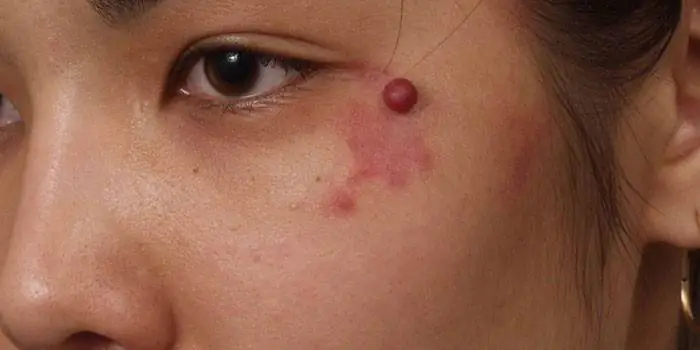
You read about the origins of moles. They also differ in the depth of the skin layer in which they are formed:
- Epidermal. In the top layer of skin, flat. They most often form in the groin, feet and palms. The shade can range from pale beige to coffee brown.
- Intradermal. Convex. They can be smooth or rough, often dark. If hair grows from the intradermal, then this is a sign that it is safe.
- Borderline. Flat, any shape, smooth. There is never any hair on them.
Classification by appearance:
- Flat. Dry and smooth, they do not pose a health hazard. The most common type for humans.
- Warty. Very dark and wart-like. Their condition must be constantly monitored.
- Convex. Dark, can be either smooth or rough, covered with coarse or vellus hair.
- small – up to 1.5 cm in diameter;
- medium - up to 10 cm;
- large – more than 10 cm;
- gigantic - cover significant areas of the body or face.
Dangerous moles
Some nevi, under the influence of one reason or another, can develop into cancerous tumors. As a rule, this occurs due to injury to the formation or prolonged exposure to ultraviolet rays. Dangerous moles are considered to be those that appear in adulthood, rapidly change their appearance and exceed a centimeter in diameter. A person should monitor such suspicious formations very carefully and regularly see a dermatologist.
People at increased risk of their occurrence include:
- fair-skinned, red-haired, with many freckles and age spots;
- have already removed malignant tumors;
- over 50 years of age;
- who have many dark ones;
- quickly “burn” in the sun;
- whose relatives had skin cancer.
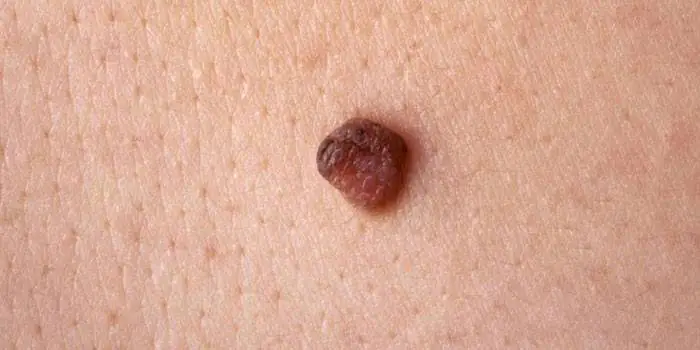
What dangerous moles look like
Several types of formations are considered these:
- Nodal. A spot with a surface of uniform color, even black.
- Blue. A dense, smooth knot without hair, rising above the surface of the skin.
- Halo nevus. A colored formation on the skin surrounded by a colorless ring.
- Skin pigmentation. Slightly convex, pale, sometimes covered with hairs.
- Gigantic. Any formation of enormous size is dangerous.
- Nevus Ota. Dark brown or gray-blue formation, very large.
- Dubreuil's melanosis. Precancerous formation with uneven contours.
If dangerous moles look as described above, then there is a high risk of their degeneration into melanoma, a type of skin cancer. It is worth noting that such a tumor is highly treatable if detected in time. You should immediately contact a dermatologist if the following symptoms appear:
- deformations;
- discharge of blood or fluid;
- symmetry violations;
- burning;
- changes in surface texture;
- pain;
- hair loss;
- itching;
- the appearance of ulcers or cracks;
- seals;
- inflammation;
- color changes, appearance of inclusions.
How to identify a malignant mole
You need to periodically examine your body in order to promptly consult a doctor if there are suspicious signals. To identify a malignant mole, use the basic ACORD rule:
- "A - asymmetry." If it is no longer the same shape, it may be reborn.
- "K - contour." Uneven, fuzzy, blurry edges are a warning sign.
- “O—shade.” Any changes in color, the appearance of dots, inclusions, stripes and specks may indicate a malignant formation.
- "R - size." If it suddenly begins to grow, consult a doctor immediately. The maximum acceptable diameter for the norm is 6 mm.
- "D - dynamics." If crusts, cracks appear on the formation, or blood or any substance begins to come out of it, then you need to visit a specialist. Suspect nevi that become too soft, become covered with nodules, become painful, or are surrounded by inflamed red skin. A sudden increase in altitude is dangerous.

How to remove moles on the body
Dangerous and suspicious formations are removed for medical reasons. A person can also remove moles on the body at his own request if they cause him aesthetic or practical discomfort (they cling to clothes, are constantly touched by nails). There are several ways to get rid of nevi: laser beam, surgery, radio waves, liquid nitrogen. Each of them needs to be discussed in more detail.
Laser removal
A very gentle and effective method of destroying formations with a directed beam. Laser mole removal can be performed using two techniques:
- Layer-by-layer evaporation. The beam gradually removes layers from the surface to the deep.
- Excision with a laser knife. The material after such an operation can be sent for histological examination.
- the method is absolutely safe;
- the risk of complications is minimized;
- there is no blood, because laser radiation immediately “seals the vessels;
- there are practically no contraindications;
- As a rule, one session is enough;
- painless (local anesthesia is performed);
- no recovery time after surgery is required;
- non-contact technology ensures complete sterility;
- the procedure is carried out very quickly.
- infection may occur;
- The wound takes a long time to heal, leaving a scar.
- diabetes;
- sun allergy;
- infections in the body;
- heat;
- oncological diseases;
- epilepsy;
- any skin inflammation;
- pregnancy.
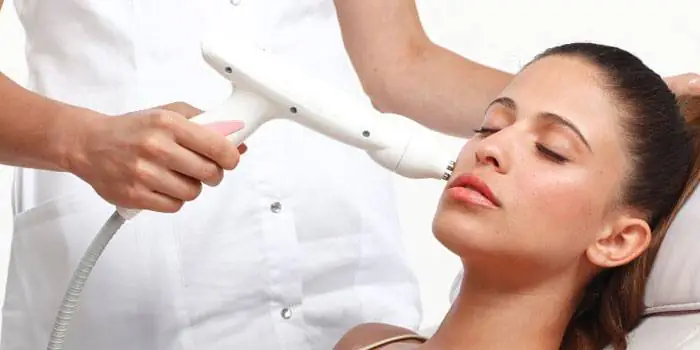
Surgical method
A very affordable method, the only one suitable when there is no possibility of alternative procedures. The surgical method is reliable and is often used for tumors suspected of malignancy. The formation and a small area of skin adjacent to it are excised under general or local anesthesia with an ordinary scalpel. The material can be immediately sent for histological examination.
- whatever the size of the formation, it will be removed in one go;
- low price;
- relapses almost never occur;
- complete absence of contraindications;
- the method is safe.
- A scar remains, although modern techniques for applying cosmetic sutures make it possible to make it as thin, even and invisible as possible. In addition, the use of modern anti-scar ointments will help reduce it to nothing.
- The wound takes a long time to heal. It needs to be processed regularly and carefully.
Cryodestruction
This is the name of the process of destroying formations with liquid nitrogen. To put it simply, the mole is frozen and its cells die from the cold. Cryodestruction is performed without anesthesia at all or with local anesthesia. This procedure will be most effective for flat formations on the body that do not go into the deeper layers of the skin. Nitrogen is applied by lubricating the surgical site with a cotton swab or using a special applicator.
- inflammatory, infectious processes;
- pregnancy;
- malignancy of formation;
- convulsions;
- epilepsy.
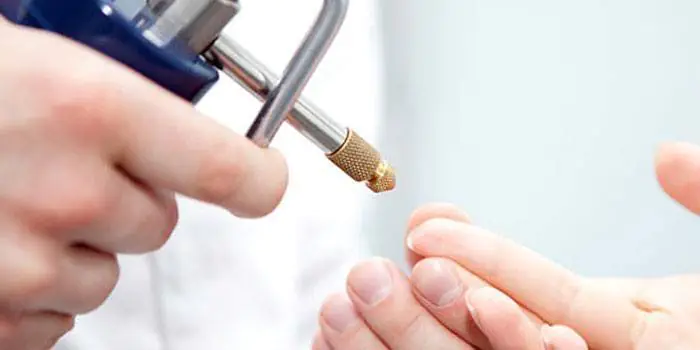
- removal is painless;
- the risk of complications is very small;
- cryodestruction is carried out quickly;
- the operation is inexpensive.
- the formation may not disappear completely, because nitrogen does not act on the deep layers of the skin;
- very high risk of scars;
- there is a possibility of damaging healthy tissue and causing a burn;
- for large sizes, several cryodestruction sessions may be required;
- recovery takes a very long time and during this period the use of cosmetics and exposure to the sun is prohibited.
The content of the article:
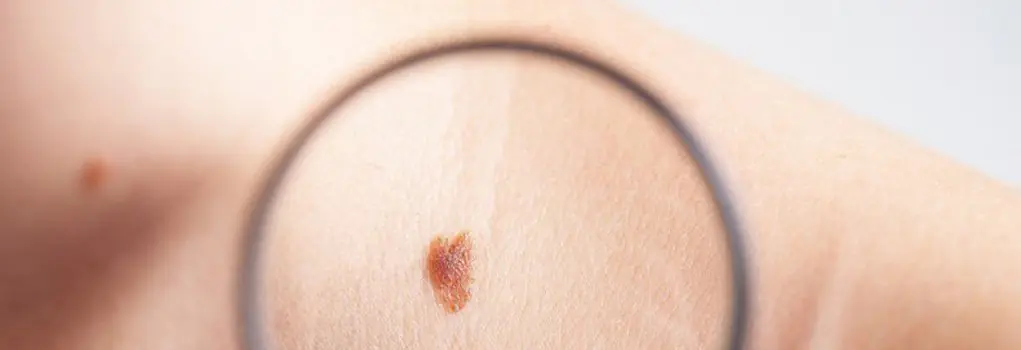
Reasons for the formation of moles
Moles, or as they are scientifically called, nevi, are formed in the upper layers of the skin when a large number of pigmented cells accumulate next to each other. Typically, such neoplasms begin to appear during the first year of a child’s life - in this case they speak of congenital spots, the appearance of which is embedded in the baby’s DNA, or during puberty against the background of hormonal changes.
The exact cause of the formation of a nevus on the body is very difficult to establish. If we exclude the hereditary factor, due to which moles are already noticeable in infants, a hormonal surge in the body can provoke the appearance of new spots. For this reason, new spots are especially noticeable during pregnancy or menopause in women, with certain diseases of the thyroid gland, etc.
The frequency and duration of sunbathing affects the number of nevi, because it is under the influence of ultraviolet radiation that the melanin pigment appears. By the way, in many cases it is sunburn that provokes the degeneration of a benign mole into a malignant one.
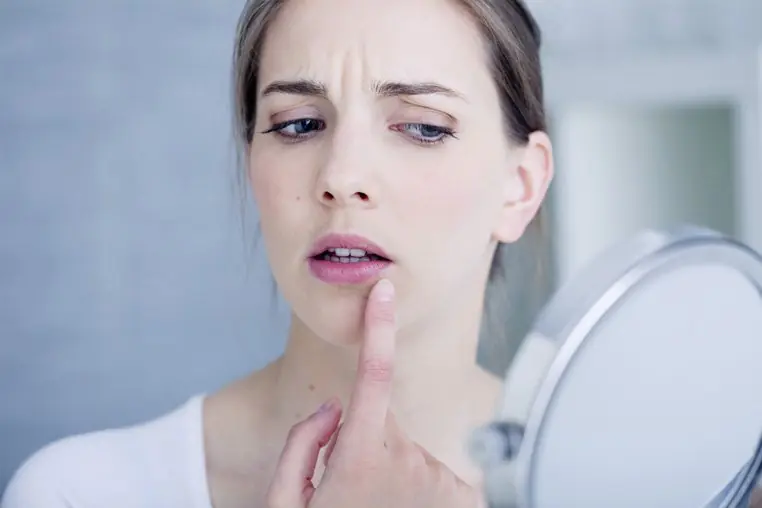
Red moles - most often noticeable in the form of small red dots - are evidence of pathological branching and growth of the circulatory system, but they do not pose a health hazard. Such nevi can appear and disappear on their own.
Stress can also trigger the formation of moles - it has long been proven that strong negative experiences also change the body’s hormonal system, which directly affects the appearance of any neoplasms. Other reasons may be any radiation or x-ray exposure, viral infections, or unfavorable environmental conditions.
Types of moles on the body
Experts distinguish moles depending on their size, color, shape, and location on the skin. Based on all these parameters, the following types of nevi can be distinguished:
- Hemangiomas are vascular moles of bright red or burgundy color, which can have different sizes, but rarely exceed 2 mm in diameter. They are located either in the epidermis itself or rise above it.
- Lentigo is a uniform pigment spot, the color of which is slightly darker than freckles.
- Flat moles are neoplasms located in the dermis itself or slightly rising above it. Their size varies within 10 mm, localization extends mainly to the palms, soles and genital area, and the color range ranges from yellowish-brown to black.
- Convex moles are brown nevi that rise above the skin. The surface can be either absolutely smooth or uneven. Among them there are hairy formations.
- Dysplastic moles are nevi of various shapes, exceeding 10 mm in diameter. Such formations are distinguished by reddish tints and blurred edges, are usually inherited and are located on the buttocks and chest.
- White moles are nevi that have an almost transparent color and sometimes a white edge. The colorlessness of such neoplasms is due to an insufficient amount of melanin at the site of localization. They can usually be seen on the scalp.
- Large pigmented moles are brown or almost black formations over 1 cm in diameter, localized either in the epidermis or rising above the skin.
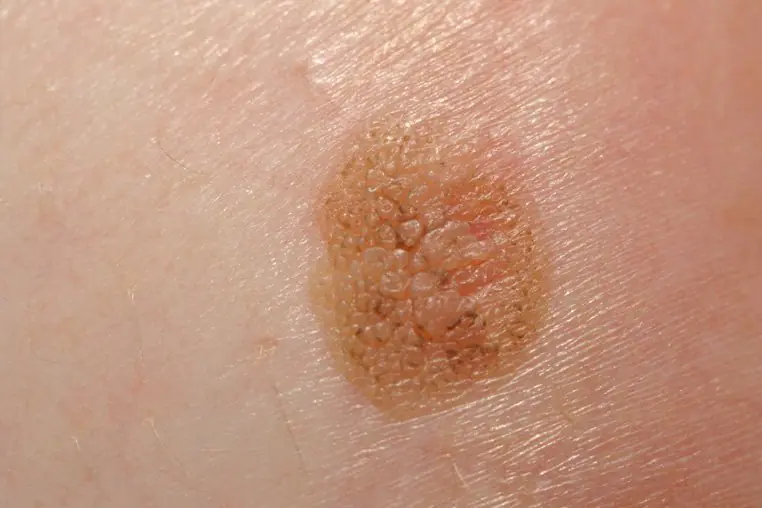
According to statistics, it is large moles that more often degenerate into malignant formations, so they should be constantly monitored.
Moles as a signal of dangerous diseases
Moles are considered benign formations, which, under the influence of certain factors, can cause the development of such a dangerous cancer as melanoma.
According to statistics, 30% of melanomas develop in the area where nevi are located.
Factors contributing to the degeneration of moles into malignant ones:
- Ultraviolet radiation - scientists have repeatedly stated the danger of direct sunlight for the skin in general and pigmented spots on it in particular. This is also confirmed by statistics, according to which residents of southern countries more often suffer from melanoma, and it manifests itself in open areas of the body.
- Hormonal imbalance - hormones control overall health, including the formation and degeneration of nevi. Not always their imbalance in the body leads to melanoma, but the fact that moles begin to transform into malignant ones during a hormonal surge has been confirmed.
- Injuries - according to oncologists, the transformation of nevi in almost half of the cases is associated with injury to either themselves or the skin around them. In this case, both deep wounds and seemingly insignificant scratches can cause mutation.
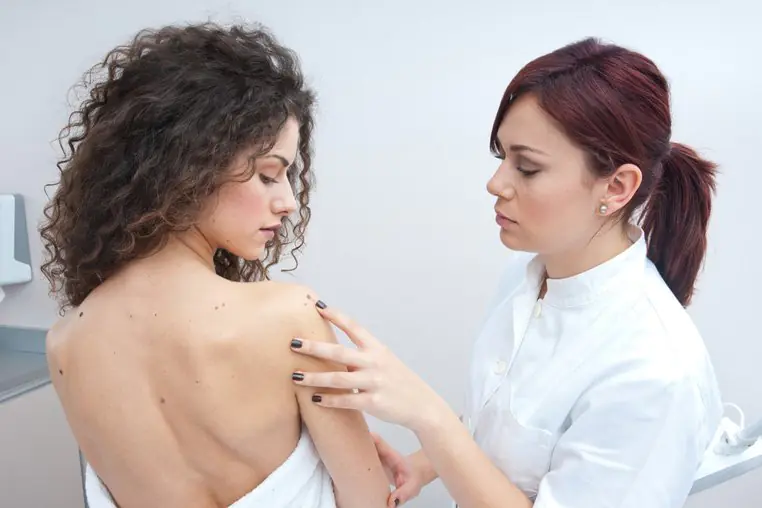
For this reason, hanging moles or nevi in places where they are easy to touch are recommended by dermatologists for removal.
Which moles are dangerous:
In order to prevent the development of melanoma, experts came up with the AKORD system, which helps ordinary people not to forget the main signs of dangerous moles and to take care of their health in a timely manner. ACORD is:
— Asymmetry – both parts of nevi, especially large and dark ones, must be symmetrical with each other, since asymmetry is a sign of degeneration of a mole;
— Edge – uneven edges of pigmented patches should also be a sign of concern, especially if they are wavy or jagged;
— Coloring – the color of a healthy mole is usually constant, so any darkening of the nevus is a reason to consult a doctor;
— Size – moles of about 10 mm or more should always be under the supervision of a specialist, since the risk of their mutation is especially high;
— Dynamics - any changes in moles, be it peeling, cracks, enlargement, itching or fluid secretion, may indicate the development of a malignant neoplasm.
It is important to note that the listed symptoms are not always 100% indicative of oncology, sometimes this can be the body’s reaction to sunburn or hormonal imbalance, but it is always better to make sure there is no danger, since melanoma is considered one of the most aggressive types of cancer.
Very often, to be on the safe side, doctors advise removing moles that have a high chance of degenerating based on external signs, as well as those nevi that can be accidentally injured by hands, clothing, a comb or a razor. It is better to get rid of them from a doctor, and not from a cosmetologist, who is not able to conduct the necessary preliminary studies of tumors.
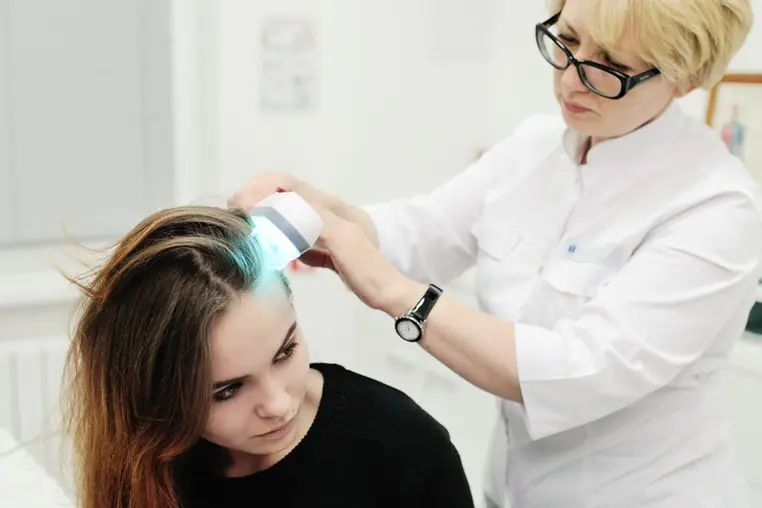
As methods for removing moles, modern medicine offers: surgery, burning with a laser or liquid nitrogen, as well as electrocoagulation. Their choice depends on the specific situation and problems with nevi.
The meaning of moles on the body
Ancient Tibetan and Indian practitioners believed that all lines and spots on the body have their own meaning. And moles were studied especially carefully. Thus, it was believed that moles on a person’s neck indicate the fickleness of unbalanced nature, rapidly changing principles and tastes, which especially concerns the female half.
Markings on the palms are usually characteristic of extraordinary individuals; they indicate great willpower and the ability to even change fate with due effort.
Moles on the chest appear more often in people whose lives are always full of different events, both positive and negative. But at the same time, their owners always maintain a positive attitude and can find a way out of any situation.
In ancient practices, the stomach is the basis of a person’s foundations, so moles on it can mean self-love, self-indulgence and even some kind of selfishness.
A spot on the navel is a sign of wealth, and for the female half it is also a sign of good luck in love affairs.
Nevi on the face are of particular importance. Thus, a mole on the chin reveals the vulnerability of nature, above the upper lip it declares independence, and between the eyebrows indicates good intuition. For women, a mole near the lips can mean some frivolity and great sexuality of nature, but a man with such a mark, on the contrary, embodies modesty and a penchant for one love for life.
Moles accompany people throughout their lives. They can form on the body in the first days of the birth of a newborn or during the process of growing up. Some consider them a disease, while others consider them a mystical symbol. In order to avoid becoming a victim of myths and conflicting opinions, we recommend that you understand from “A” to “Z” what these marks are.
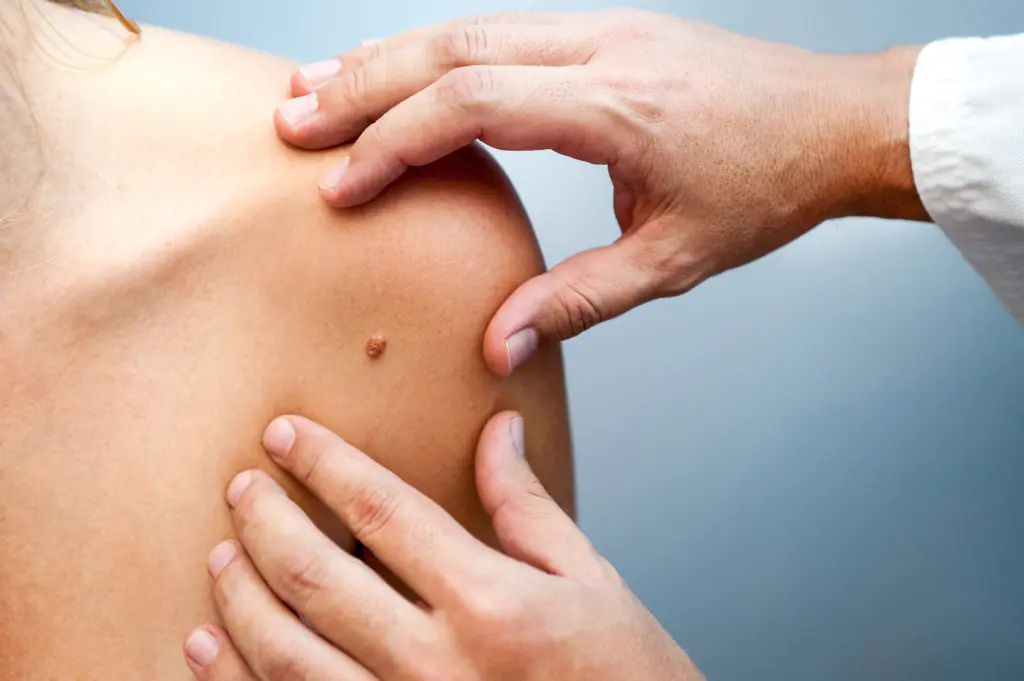
What are moles?
Moles are pigmented skin cells (melanocytes). They actively appear in people under 24 years of age. The color, size and shape can vary: dark brown, pale pink or red, flat or raised above the skin (bump-shaped), convex or smooth. In some cases, hair growth is observed on them - in such cases they must be carefully cut off, but under no circumstances should they be pulled out.
Moles can be found on any part of the human body, but mainly on the thighs, buttocks, back and abdomen. Doctors suggest that the number of moles is influenced by genetic predisposition and melanotropic hormone. Essentially, the more hormone the pituitary gland produces, the more moles appear.
What causes moles to appear?
In each person, the appearance of moles is provoked by different factors, which are not always the same. However, there are several common reasons that lead to the appearance of such marks on the body.
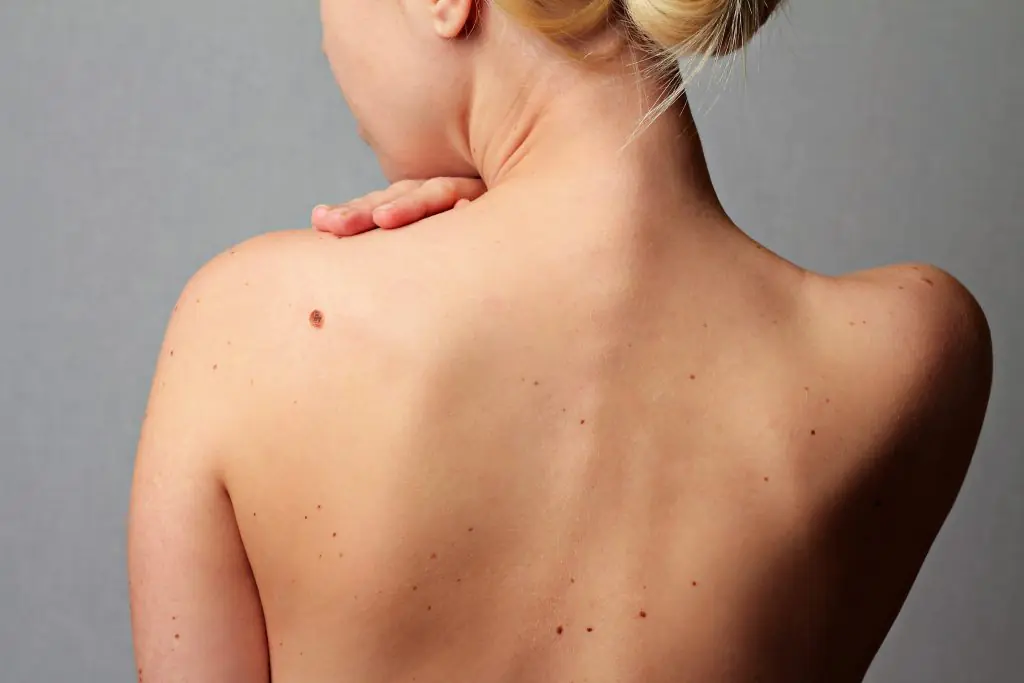
As a result of exposure to ultraviolet light
The sun's rays not only give us a wonderful tan, but also affect the formation of new moles. They emit ultraviolet radiation and activate melanin production. The body creates it to protect the epidermis, resulting in spots or “nodules” – new moles – appearing on the surface.
Hormones are the main cause of mole formation
Changes in hormonal levels make adjustments to the functioning of all organs of the human body and its systems. As a result, weight, hair structure, skin condition changes and moles appear. They arise as a result of an increase in the level of melanin in the blood, at moments when a “hormonal surge” occurs. The most susceptible to the appearance of moles are:
- pregnant women
- youth in adolescence
- people during illness and as a result of severe stress
Diseases of internal organs
A number of certain diseases are factors that provoke the appearance of new moles. Most often, such processes occur when:
- diseases of the epidermis (dermatological diseases)
- disruptions in the functioning of the intestines and digestive organs
- lipid process failures
Heredity and age
We must not forget about genetic predisposition and aging. Children adopt from their parents the peculiarities of the processes in the body and the structure of the skin. However, the next generation does not always adopt the appearance of marks.
When should you sound the alarm?
This decoration of the skin, in some cases, can transform into malignant tumors - melanoma. These changes do not go unnoticed and can be visually diagnosed by moles, since they:
- growing fast
- change shape and color
- cause discomfort when touched
- new formations appear on moles
It is impossible to prevent the appearance of moles on the skin. But excessive exposure to the sun, as well as various hormonal changes in the body (pregnancy, adolescence and stress) can trigger their appearance.
Moles on the body: their meaning for a person’s fate
The appearance of moles on different parts of the body can be explained not only from the point of view of medicine, but also from psychology and astrology. For many centuries, people have considered these marks to be fateful and capable of telling a lot of interesting things about a person: his character, career, personal life, and so on.
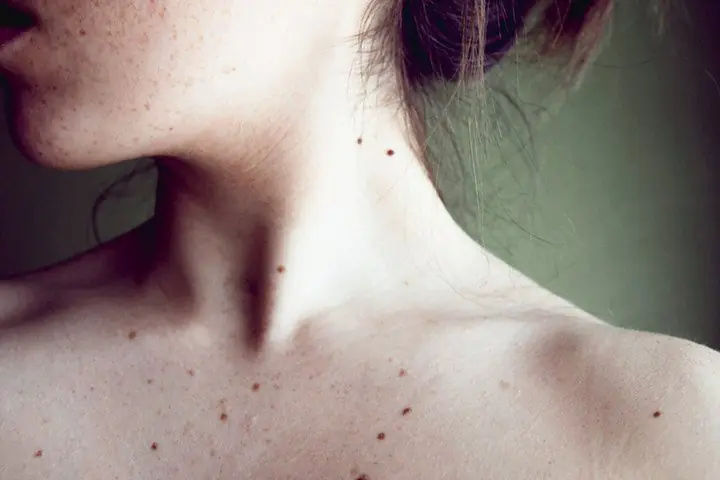
Moles on the forehead
Such people have a predisposition to the exact sciences and the opportunity to become a statesman, an outstanding politician or diplomat. If you have a mole on the bridge of your nose, you can foresee the future, because this place is considered the location of the “third eye.” If the marks appear at the top of the forehead, they are a symbol of excellent organizational skills.
Mole on temple
It is of great importance which temple the mark is located on. If on the right, you are a very sentimental person and can be forgetful and absent-minded. You often have dreams that are stored in your memory for a long time and sometimes come true. If on the left, you are a real fortune teller, but it is not customary to talk about such abilities.
Mole on cheek
Owners of moles on the right cheek have great luck and happiness in life, they do not have a feeling of lack of love. And with marks on the left - they achieve results through effort, but at the same time they have hidden talents.
Mole on the chin
Such people have a strong will and complete any task. If the mark is on the right side of your chin, you are generous, full of optimism, always ready to listen and help.
Mole on the back
The owner of moles on her back makes high demands on others. At the same time, he is distinguished by his high level of hard work and is always completely dedicated to his work. The owner of such a mole needs to be careful because of the tendency to betrayal on the part of the people around her.
Moles on hands
Women with such moles have a strong and happy marriage. If it is located on the forearm, the owner is able to provide her man with the maximum level of comfort. It is also worth noting that those who have two moles on their right hand remain faithful in any situation.
Mole on eyelids
The appearance of marks in this area is a sign that a person is guided more often by feelings than by reason. He dreams often and changes his beliefs several times a day.
Mole in the upper lip area
The appearance of marks in the upper lip area often indicates the owner’s cunning and desire to succeed in her career.
Mole on thighs
The personality is often distracted by small details, sees incomprehensible dreams, often with unrealistic plots. It is believed that they have heavy karma and they need to be able to feel their body. For them, nature is a source of charge and purification of thoughts. A job as a teacher or surgeon is ideal for them.
Moles on knees
Markings in these places are found on impatient people. The more moles, the more impatient a person is. They do not sit still, they are in a hurry, they are not attentive. They need to have their opposite nearby, because in this case their work will be done 100%. If such a person can surpass himself and overcome his shortcomings, he can become an outstanding personality.
Moles on the feet
They are rare, but they are the ones who tell how resilient a person is. They attract warming and inspiring energy.
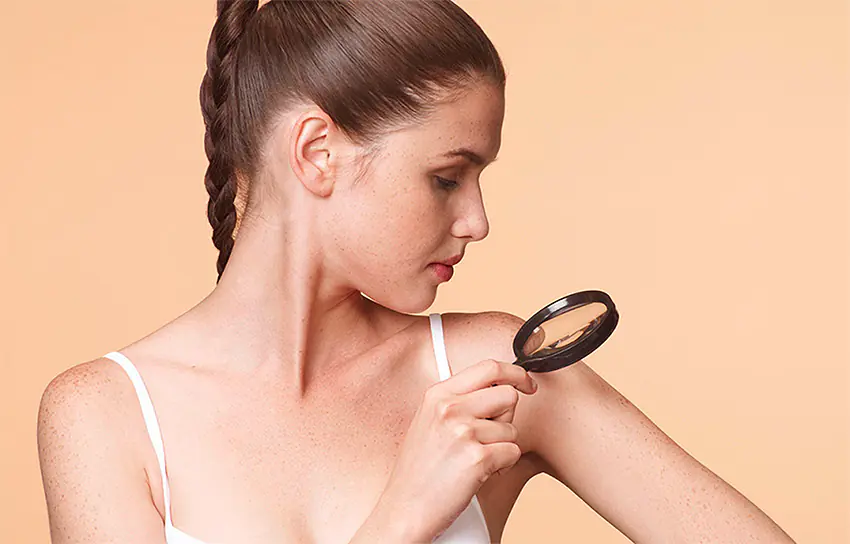
There are many myths and rumors about moles. Some people insist that they are not harmful and are a good sign, while others recommend getting examined immediately. Most marks of this type do not harm the human body, but if they bother you, do not hesitate to make an appointment with a doctor.



